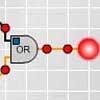Skip over navigation



Or search by topic
Number and algebra
Geometry and measure
Probability and statistics
Working mathematically
Advanced mathematics
For younger learners
Big and Small Numbers in the Living World
Age 11 to 16
Challenge Level 





- Problem
- Getting Started
- Student Solutions
- Teachers' Resources
In estimation questions don't be afraid to have a go with a guess
at some numbers in the problem and then to refine your estimate
after checking it makes some sort of sense.
Although there is no 'right' answer to an estimation, there are good or bad estimations and sensible or over detailed calculations.
Think how you might make your estimation a good one, and think how it makes sense to ignore certain complexities in the calculation.
Although there is no 'right' answer to an estimation, there are good or bad estimations and sensible or over detailed calculations.
Think how you might make your estimation a good one, and think how it makes sense to ignore certain complexities in the calculation.
You may also like
Elastic Maths
How do you write a computer program that creates the illusion of stretching elastic bands between pegs of a Geoboard? The answer contains some surprising mathematics.
Logic, Truth Tables and Switching Circuits Challenge
Learn about the link between logical arguments and electronic circuits. Investigate the logical connectives by making and testing your own circuits and fill in the blanks in truth tables to record your findings.
Truth Tables and Electronic Circuits
Investigate circuits and record your findings in this simple introduction to truth tables and logic.

